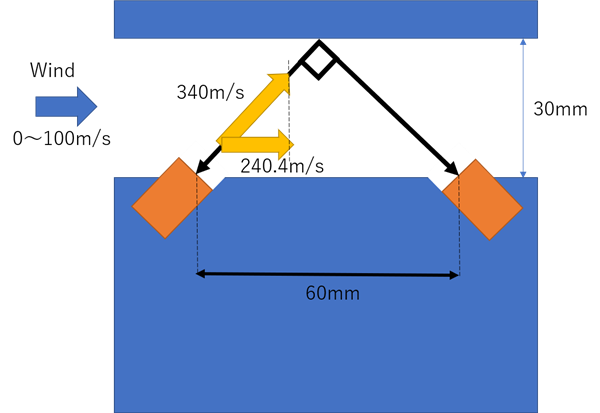Hello,
I am considering to develop anemometer using MSP430FR6043 referring to application note.
required specification is following.
Measurement Range : 0.0~100.0m/s
Resolution : 0.1m/s
Sensor's central frequency : 300kHz
Sensor installation angle : 45 °
Distance between sensors : 60mm
Do you think it is possible to develop anemometer based on application notes with the above requirements?
Are there any concerns?
Regards,
U-SK



